Pencil Grasp Development Handout
Affiliate and Referral links are used below to promote products I love and recommend. I receive a commission on any purchases made through these links. Please see my disclosure policy for more details. As an Amazon Associate, I earn from qualifying purchases.
I'm often asked what typical pencil grasp development looks like. We tackled this topic in a previous post, but I had a reader reach out to me asking for a one-page handout that she could share with parents and teachers. So I created this pencil grasp development handout that you can use as a quick reference.
What Does Typical Pencil Grasp Development Look Like?
I have a blog post all about what typical pencil grasp development looks like, starting at just a few months old. Yes, your baby is developing the skills it needs for future handwriting!
For the sake of this post, I'm going to share 6 different grasps and give you ideas on how to encourage their development.
PINCER GRASP
Pincer grasp starts to develop around 10 months old. This is also when a baby is starting to use finger foods. They develop this grasp by pinching small objects, such as food pieces. You may also see it referred to as pincher grasp.
Here are some hands-on ways to encourage pincer grasp in an older child if they need the practice.
PALMAR SUPINATE GRASP
This type of grasp is typically seen around 12 to 15 months old. “Palmar” refers to the palm of the hand being used to grasp an object. “Supinate” is a term used to describe how the arm and wrist are placed in relation to the middle of the body. As a child gets older, you can encourage them to use a more functional grasp by breaking crayons in half. You can also use smaller writing tools rather than a full-size pencil, crayon or marker.
DIGITAL-PRONATE GRASP
This grasp is typically seen around 2 to 3 years old. A child is beginning to place the fingers in a downward position on the writing utensil, but all of the fingers are being used. Digital refers to the fingers being used to grasp instead of the entire palm like we saw in the Palmar Supinate Grasp. The term “pronate” refers to the wrist being turned down and away from the middle of the body.
QUADRUPOD GRASP
This grasp can also be seen around the same time as the digital pronate grasp, between 2 and 3 years old. As a child begins to perfect a functional grasp, they could start using a quadrupod grasp. A quadrupod grasp is considered a functional grasp if you ever have a child evaluated for handwriting concerns. I actually use a quadrupod grasp myself. It is a four-finger grasp which means three fingers are on the writing utensil, index, thumb, and middle finger. It is supported by the other two fingers which are tucked into the palm.
STATIC TRIPOD GRASP
A static tripod grasp will be seen between 3 to 4 years old, as a child is perfecting the tripod grasp. It is a three-finger grasp and includes the index and thumb, with the writing utensil resting on the middle finger, The rest of the fingers are tucked into the palm.
Static refers to how the child moves the pencil. Static movement means they are using the wrist and forearm to move the pencil across the writing surface, instead of the fingers. The fingers are still, or static.
DYNAMIC-TRIPOD GRASP
A dynamic tripod grasp is the most functional grasp possible. “Dynamic” means that the movement of the pencil or writing utensil comes from the fingers with the support of the wrist and forearm. You will see this grasp develop around 5 to 6 years old.
How to Support Functional Pencil Grasps
Encouraging a good pencil grasp includes different skills, including core strength, crossing midline, bilateral coordination, shoulder stability, arm and hand strength, along with finger dexterity and finger isolation.
Encouraging different fine motor activities is one of the best ways to promote good finger and arm strength for handwriting.
Here are some links to other posts to get you started:
Get Your Pencil Grasp Development Handout
For those who subscribe to Growing Hands-On Kids for my weekly newsletter, I'll give you a free gift of the Pencil Grasp Development Handout. If you've already subscribed before, don't worry, you aren't subscribing again. You are just letting my email provider know which email to send you with the download.
Enter your name and email address below and click the green “Click Here” button. You'll need to head to your email inbox next and look for an email from me where you can confirm your subscription and download your printable.
You can unsubscribe at any time. By downloading, you are also agreeing to my site's terms and conditions and privacy policy here.

Heather Greutman, COTA
Heather Greutman is a Certified Occupational Therapy Assistant with experience in school-based OT services for preschool through high school. She uses her background to share child development tips, tools, and strategies for parents, educators, and therapists. She is the author of many ebooks including The Basics of Fine Motor Skills, and Basics of Pre-Writing Skills, and co-author of Sensory Processing Explained: A Handbook for Parents and Educators.

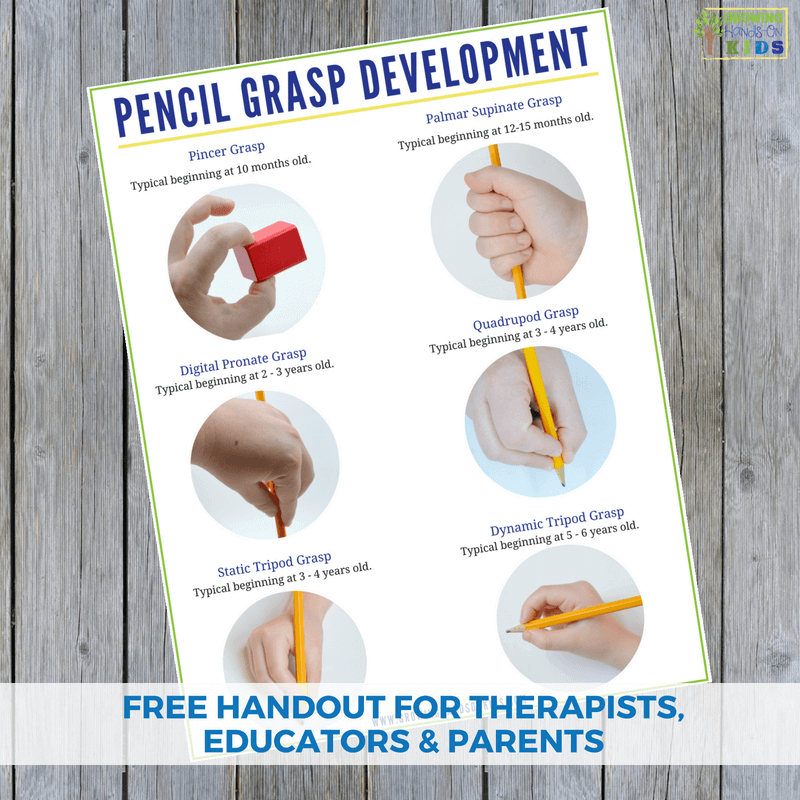
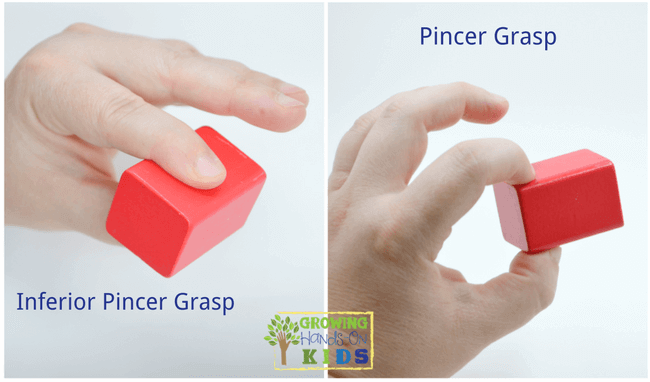
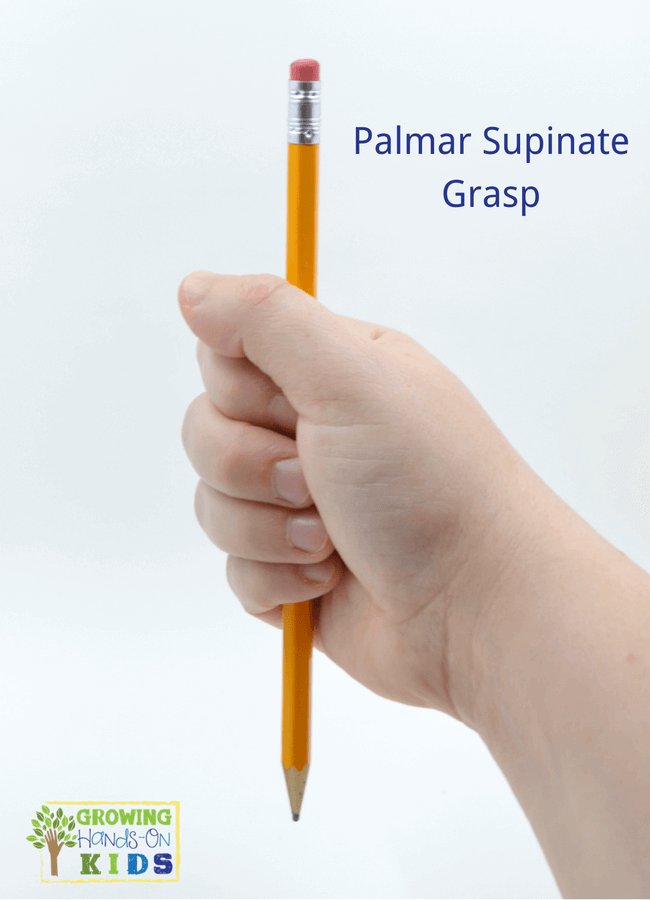
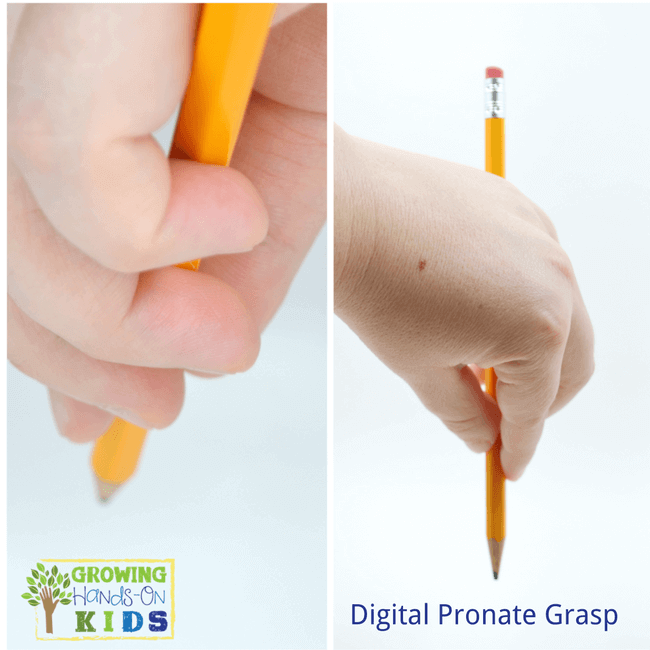
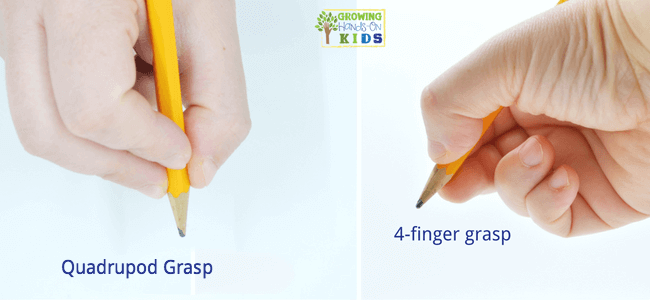
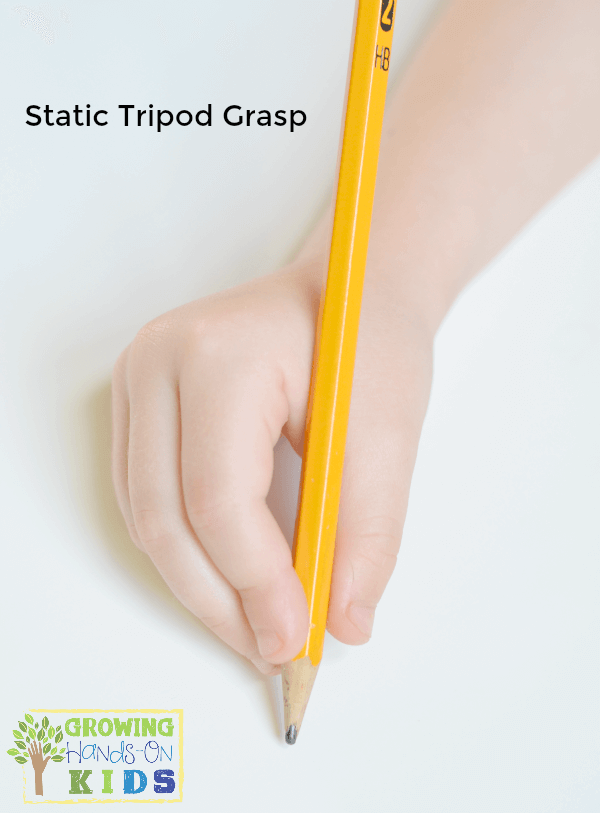
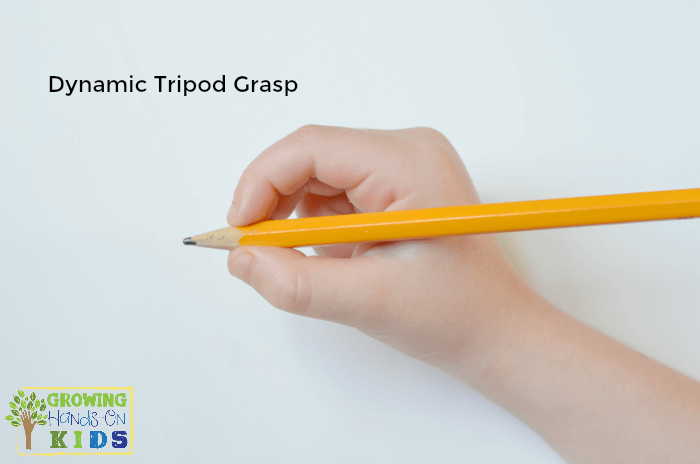
Do you have a visual of the grasps for lefties? Thanks!
I do not as none of my children are left handed. From my research, the grasps on the pencil are the same you just need to position the paper with the left corner at the top and also have them grasp the pencil at about 1 inch from the tip of the pencil. The wrist and forearm placement is also important to avoid the common “hooked’ grasp. I hope that helps. This may help also >> http://mamaot.com/tips-for-teaching-lefties-to-write/